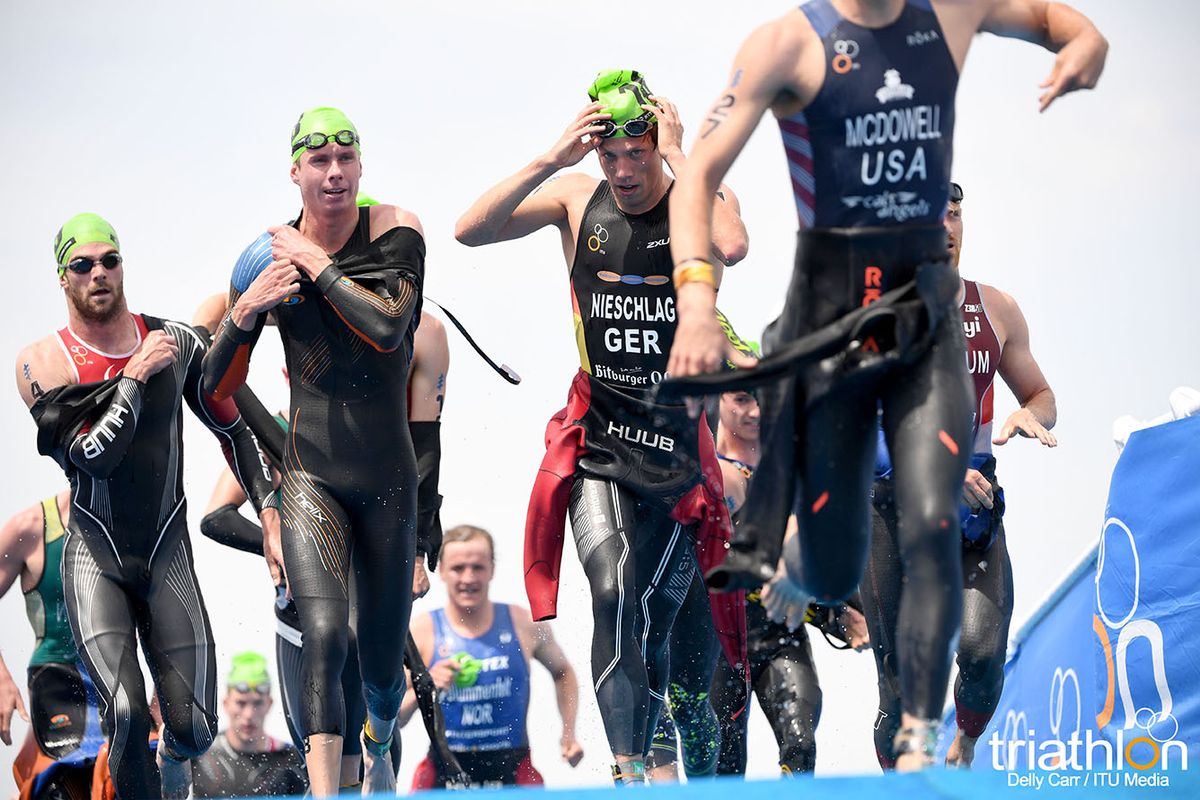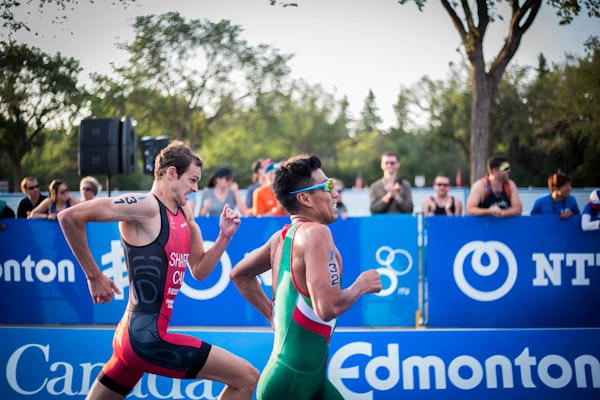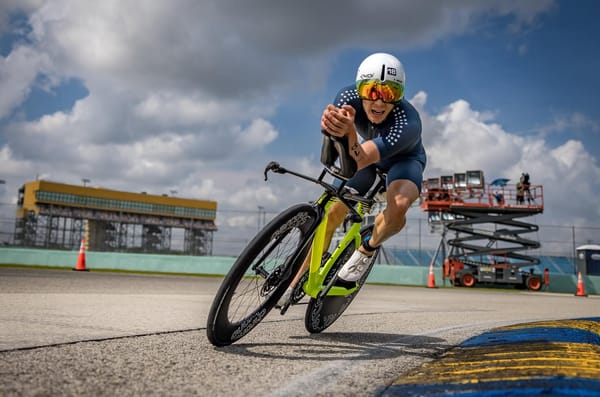How to Make the a Great Swim to Bike Transition

Triathletes are quick to complete training sessions that require them to run off the bike, and rightly so. The neophytes out there will likely experience a sensation, unlike anything they’ve come across when undertaking their first run off the bike. You will your legs to run but they’re still thinking pedal circles and your quads are pumped full of blood and you feel as though you’re running on stumps.
There’s no real reason to question the merit of training your body to shunt blood from cycling muscles to running muscles, ASAP. This both alleviates the sensation described above and improves performance. The human body is a very adaptive mechanism – ask it to do something over and over again and apply a training stimulus slowly and progressively over time and it will adapt.
How else do the likes of Alistair Brownlee and Javier Gomez manage to run 10 kilometres off the bike in fewer than 30 minutes? How do the best ultra distance triathletes get into running stride quickly and post 2:40 marathons or better? One word: Practice.
However, the bike to run transition is just one instance where triathletes must switch between muscle groups. What about the transition from the swim to bike? This is often neglected in transition and brick training with people devoting more time to the transition from bike to run.
In the water
Think about it; depending on the length of the event and your ability in the water, you’ve been laid prone for somewhere between 10-to-70 minutes. The vast majority of the work you’ve done is with your upper body as your legs trail along behind, generally with a two-beat kick and often buoyed by a wetsuit. In fact, during longer swims, it isn’t uncommon for triathletes to experience cramping in the calves and hamstrings due to a lack of blood supply. I suggest intermittently kicking a little harder to those I coach to avoid this. Flexing and extending the ankles as you swim to maintain some blood supply to the calves can also help.
However, the vast majority of the blood volume dedicated to the work you’re performing is being directed to your upper body. Then wham, you stand up, try to run to your bike, get onto it and pedal away at a rate of knots.
Is it any wonder your heart rate rockets, you immediately go into oxygen debt and the effort becomes anaerobic? It takes time to recover from this as you try to settle into a rhythm on the bike and regain your composure.
Think it through. You’ve largely robbed your legs of blood, which transports the oxygen critical for aerobic metabolism. You’ve then asked them to spring to life. The only option is anaerobic (which literally means without oxygen) metabolism. This can only be performed using muscle glycogen – which is a highly prized, limited and valuable asset – particularly in longer-distance events in which you’re trying to conserve it as best you can. In this scenario, straight out of the blocks you’re burning it like there’s no tomorrow; a folly that later in the bike, and potentially on the run, could come back to haunt you.
So, what to do?
As we approach the end of the season and plunge into the winter months, after the requisite break from formal swim, bike and run training, the winter is an ideal time to base-build. Part of this building process should also entail the building of the aerobic infrastructure necessary to facilitate swift and efficient changes from swimming to cycling, as well as riding to running.
During the off-season this can be as simple as a once-a-week casual changeover from an aerobic swim session into your bike gear before heading out for an aerobic intensity ride of a moderate duration.
Your body will soon adapt to the fact that the quicker it learns to shunt blood from the upper body to the lower body, the more comfortable and easier such sessions will become.
As the season looms closer, the training starts to change. Lower intensity aerobic sessions are traded for more and more tempo or race-pace sessions, which, through being more intense, have a greater reliability on anaerobic metabolism. Provided you’ve laid your base with the appropriate lower intensity aerobic work, your body will quickly adapt to the demands of higher intensity training and your enhanced aerobic infrastructure will be able to dissipate accumulating lactic acid.
This is where transition sessions come into play.
Following a comprehensive warm-up, focus on completing multiple, shorter, race-pace tempo or anaerobic threshold or greater intensity lactate tolerance transitions, depending on how close you are to competition and the duration of the event you’re preparing for. When warming up, it is good to do so in a reverse order, that is, run to bike to swim. This will mean you are in the water and ready to go hard while having at least opened up the blood vessels to your cycling and running muscles.
So how can you most effectively achieve this?
- If allowed, bring your bike and stationary trainer to the pool.
- Warm up with 10 minutes on the bike and five minutes in the pool. Then repeat the main set two-to-five times.
- Swim 600 metres as 200 fast and 400 at mid-race pace
- Bike 15 minutes in five-minute blocks. Four minutes at race pace with one minute of recovery.
- Pedal or swim five minutes easy between sets.
This is a simple workout that can be varied in duration and intensity depending on your level of conditioning and goals for the approaching event. What’s important here is to prepare the body for the demands of changing muscle group usage and shunting blood between the upper and lower body quickly and more efficiently to optimise race-day performance.





